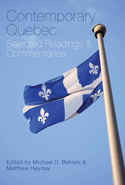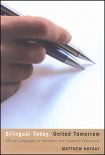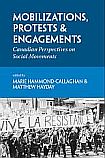History and the Santa Claus Parade Weekend
There's a history connection here, just wait for it!
This weekend is Santa Claus Parade weekend in Toronto, where I grew up, and coincidentally in Guelph, where I live. It's an important weekend in my family's history, because this was traditionally the weekend when the no-talking-about-Christmas embargo was temporarily lifted (although then subsequently reimposed until the first Sunday of Advent). My Dad, who sensibly did not like undertaking this task around a mountain of snow, usually put up the outdoor Christmas lights this weekend. We weren't allowed to actually turn them on until Advent started, but up they went. There was also often a ceremonial baking of the first shortbread rounds. The Christmas music was kept locked tightly away (indeed, for many years, we weren't allowed to listen to the secular Christmas albums until St. Nicholas Day on December 6th - it's all about the excitement management). And of course, because of the event which gave rise to these activities, we would watch the Santa Claus parade, either by trekking downtown on the TTC (and possibly trekking back in soaking wet snowpants), or watching it on TV in the comfort of our living room. These traditions really mattered to me, and so I still hold off on the start of any real Christmas decorating or baking until this weekend.
So here's the history connection. If you're a Canadian historian with access to journal databases, and you're in the mood for some fun Christmas-related Canadiana, check out Steve Penfold's most recently-published article. Entitled, "The Eaton’s Santa Claus Parade and the Making of a Metropolitan Spectacle, 1905–1982", it was published in the May 2011 issue of Histoire Sociale/Social History. Penfold does a really good job of analyzing the history of the Toronto Santa Claus parade (which pre-dates Macy's famous Thanksgiving Day parade) when it was sole-sponsored by Eaton's (and thus, before the period I can really remember). He connects the parade to issues of corporate and commercial culture, of urban development, of parades and festivities, of media history, and to Toronto's place within the broader Canadian fabric. It's also a very enjoyable read, which is high praise for academic work. Unfortunately, it is behind a pay wall, but it's well worth reading if you can get access through a library system!
Now if you'll excuse me, I have some Christmas lights to put up (but not turn on for another week or so).
Labels: Santa Claus Parade, Steve Penfold, Toronto
Recommend this Post





0 Comments:
Post a Comment
<< Home